Introduction:
The idea of sustainable urban planning has become important in a time of increased urbanization and environmental problems. It is crucial to design urban landscapes that promote environmental preservation, social equality, and economic vibrancy in addition to providing space for growing populations as our cities continue to grow. This essay explores the ideas and methods of sustainable urban planning, emphasizing the tactics being used to transform cities into resilient, peaceful places for future generations.
Defining sustainable urban planning:
An all-encompassing and futuristic approach to urban development is sustainable urban planning. It combines several aspects of city planning to build environments that strike a balance between the requirements of the present and the welfare of coming generations. At its core, it seeks to balance urban development with social justice, environmental protection, economic prosperity, and cultural vitality.
This multidimensional strategy necessitates careful consideration of elements like infrastructure, community involvement, land use, transportation, and environmental preservation. It entails thorough analyses of a city’s present situation, predictions for the future, and the creation of plans that put sustainability first. The goal is to build cities that protect natural resources, have a minimal impact on the environment, and not only accommodate expanding populations but also foster healthy, thriving communities.
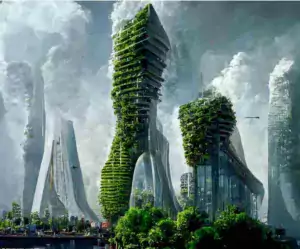
Eco-Friendly Infrastructure and Transportation:
The creation of environmentally friendly infrastructure and transportation networks is essential to sustainable urban planning. This calls for the adoption of eco-friendly building strategies, renewable energy sources, and innovative urban transportation options. For instance, employing materials and technology that lower energy use and environmental impact is a component of adopting green construction principles.
Additionally, a key factor in lowering the usage of private vehicles is investing in public transportation, such as light rail, buses, and bicycle facilities. Cities may reduce automobile congestion, reduce greenhouse gas emissions, and enhance air quality by offering affordable and effective public transportation options. Adopting cutting-edge transportation technologies like shared mobility services and electric cars also helps to create a more sustainable urban mobility ecosystem.
Green Spaces and Biodiversity Conservation:
A key component of sustainable urban planning is the preservation and improvement of green spaces in urban settings. Green spaces such as parks, gardens, urban forests, and greenways are essential to creating a healthy, livable urban environment. They improve general quality of life, offer recreational areas for locals, and promote both physical and mental health.
Additionally, green areas function as natural carbon sinks that lower air pollution and the urban heat island effect. By creating habitats for animals and fostering ecological diversity, they sustain biodiversity. Incorporating green infrastructure components like vertical gardens, green roofs, and permeable pavements not only improves aesthetics but also helps manage rainwater, relieving pressure on traditional drainage systems.
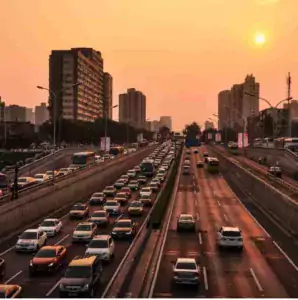
Mixed-Use Zoning and Smart Land Use:
It is crucial to encourage mixed-use zoning if you want to build vibrant, walkable urban areas. This strategy involves fusing nearby residential, commercial, and recreational areas. Cities promote walkability, cut down on long commutes, and promote social contact by encouraging a variety of activities and services in a small area.
Adopting smart land use methods also include careful urban design that maximizes the use of available space. This could involve the use of compact urban design, which concentrates growth in key regions and improves resource efficiency. Additionally, towns can give outdated buildings a new lease on life through adaptive reuse efforts, which cuts down on waste and conserves resources.

Social Equity and Inclusive Urbanism:
Social fairness and inclusive urbanism are prioritized in sustainable urban development. Regardless of socioeconomic class, color, age, or background, this strategy aims to make sure that urban development projects benefit all sections of the population. Policies that support affordable housing, equal access to necessary services, and the development of inclusive public places are just a few examples of initiatives that could be taken to accomplish this goal.
In addition, encouraging community involvement and engagement is essential to inclusive urbanization. Cities enable local communities to express their needs, concerns, and goals by including inhabitants in the decision-making process. Urban planning that is more informed, contextually aware, and reflective of the population’s diversity as a whole results from this collaborative approach.
Resilience to Climate Change and Natural Disasters:
Sustainable urban planning places a strong emphasis on resilience in light of the growing difficulties caused by climate change and natural disasters. To do this, metropolitan infrastructure must be designed and upgraded to resist severe weather, flooding, and other climatic difficulties. Cities can improve their ability to withstand environmental stressors by integrating climate-resilient building materials, elevating buildings in flood-prone locations, and implementing green infrastructure solutions.
Building resilience also requires the implementation of early warning systems, disaster preparedness plans, and community education programs. These actions encourage a culture of readiness and equip communities to respond to catastrophes successfully.
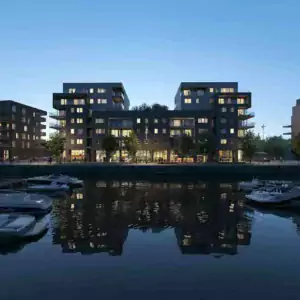
Community Engagement and Stakeholder Collaboration:
Sustainable efforts must be planned with participation if they are to be successful. Communities and stakeholders should be involved in the planning process to guarantee that projects are in line with local requirements and goals. This participatory procedure encourages a sense of collective ownership and accountability for the growth of the city.
In order to create sustainable urban settings, it is important for corporations, non-profit organizations, community organizations, and citizens to work together. Collaboration among various parties enables the sharing of resources, know-how, and expertise, leading to more successful, contextually appropriate urban planning outputs. Cities may successfully traverse the challenges of sustainable urban planning by utilizing the collective wisdom of various stakeholders.
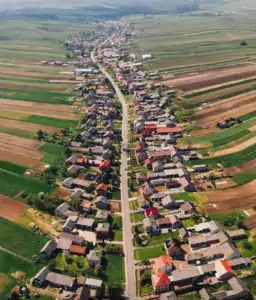
Read More: The Impact of Artificial Intelligence on the Job Market in the 2030’s
Challanges in Sustainable Urban Planning: Designing Cities for the Future
1.Population Growth:
Explanation:As a result of urbanization, many cities are seeing fast population increase, placing strain on the infrastructure and resources already in place.
Impact:Urban planners must address this issue by creating communities that can house a growing population while maintaining sustainability in terms of resource use, housing, and services.
2.Infrastructure Investment:
Explanation:Developing sustainable infrastructure frequently necessitates sizable up-front investments, which can be difficult for cities with tight resources to achieve.
Impact: For sustainable development, funding is essential for green infrastructure initiatives including public transportation systems and renewable energy systems.
3.Transportation:
Explanation: Promoting public transportation, easing traffic congestion, and supporting non-motorized forms of transportation including walking and cycling are all aspects of sustainable transportation.
Impact: In order to cut emissions, use less energy, and improve air quality, it is essential to develop efficient and environmentally friendly transportation systems.
4.Affordable Housing:
Explanation:Eco-friendly building techniques and materials should be used, yet they occasionally cost more than more conventional choices.
Impact: Cities must make sure that green housing options are available to a broad population, which presents a challenge in balancing cost and sustainability.
5.Waste Management:
Explanation: For cities to be sustainable, waste management and recycling must be done properly. It can be difficult to put effective waste management procedures into practice.
Impact: Effective waste management lowers reliance on landfills and environmental contamination, promoting the sustainability of metropolitan areas.
6.Air Quality:
Explanation: Because to pollution from vehicles and industries, urban areas frequently have poor air quality.
Impact: Stricter restrictions and cleaner technology are needed to reduce emissions and improve air quality, which is important for both human health and the environment.
7.Green Spaces:
Explanation:Keeping urban green spaces maintained is essential for the welfare of citizens and the environment.
Impact: To maintain a balance between urban expansion and green spaces, cities must guarantee public access to parks and other natural areas for ecological and recreational purposes.
8.Water Management:
Explanation:Providing clean water, reducing flooding, and dealing with droughts are all components of effective water use and management, which is a component of sustainable urban design.
Impact: Effective water management helps cities adapt to climate change and guarantees a sustainable water supply.
9.Climate Change Resilience:
Explanation:Cities need to be ready for climate change effects such rising sea levels, severe weather, and heatwaves.
Impact: Disaster preparedness, infrastructure adaption, and sustainable land use techniques are all part of resilience planning.
10.Urban Heat Islands:
Explanation:Urban heat islands are places where the temperature is higher than normal because of human activity. They might have a negative impact on health and energy use.
Impact: To reduce the heat island effect, cooling measures like reflecting materials and green roofs must be used.
11.Social Equity:
Explanation:It can be difficult to ensure that sustainability benefits every citizen, regardless of background or means of subsistence.
Impact: Through the provision of affordable housing, fair access to public services, and employment opportunities, sustainable urban planning should address socioeconomic inequalities.
12.Regulatory Frameworks:
Explanation:Inadequate or outdated legislation might impede sustainable growth.
Impact: In order to foster a climate that supports sustainable urban planning, it is crucial to update and enforce zoning regulations and building codes.
13.Community Engagement:
Explanation:Community and public participation in planning can be difficult, but it is essential for the effective execution and acceptance of sustainable plans.
Impact:Public participation makes ensuring that urban plans take into account the wants and needs of the neighborhood, resulting in more successful and inclusive outcomes.
14.Data and Technology:
Explanation:Having access to information and technology is essential for developing sustainable urban planning strategies.
Impact: Cities can track progress, pinpoint areas for improvement, and allocate resources more efficiently thanks to improved data collecting, analysis, and technology utilization.
15.Political Will:
Explanation: Sustainability frequently takes long-term planning and may not immediately produce favorable political outcomes.
Impact:Political leaders must support sustainable policies and be prepared to make investments in the future prosperity of their cities.
16.Global Collaboration:
Explanation: International cooperation is necessary to address some sustainability issues, such as climate change.
Impact: In order to effectively handle global concerns and exchange best practices with other urban centers, cities may need to manage international agreements and alliances.
10 cities known for their futuristic architecture, technology, and urban planning:
1.Tokyo, Japan:
Technology:Tokyo is well-known for having cutting-edge technologies. Some of the most cutting-edge electrical businesses and robotics research facilities are located there.
Architecture:The city has a unique blend of traditional and futuristic building styles. Modern architecture may be seen in places like Odaiba, while historical locations like Asakusa offer a counterpoint.
Transportation:Tokyo’s public transportation system is highly effective and comprehensive, and it includes both a complex subway system and high-speed trains (Shinkansen).
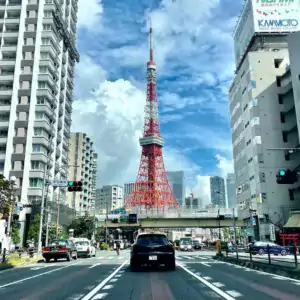
2.Dubai, UAE:
Skyscrapers: The Burj Khalifa, the world’s tallest building, and other futuristic skyscrapers dominate Dubai’s skyline.
Urban Development: Dubai is renowned for its large-scale urban development initiatives, including the Palm Jumeirah and The World islands.
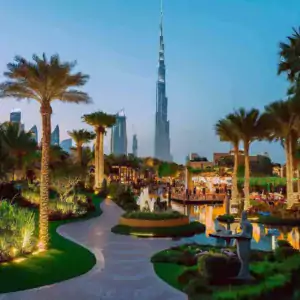
3.Singapore:
Smart City Initiatives:Initiatives for Smart Cities: Singapore is a pioneer in developing technologies for smart cities. It uses cutting-edge data analytics, IoT, and AI to govern and design cities effectively.
Sustainability: The city is devoted to sustainable development, as evidenced by programs like the Marina Barrage, which controls flooding in addition to providing freshwater supply.

4.Seoul, South Korea:
Technology Powerhouse: With household names like Samsung and LG, Seoul is a hub for technology. It is also renowned for its infrastructure for high-speed internet.
Urban Planning:Green spaces, pedestrian-friendly areas, and cutting-edge transportation systems are all part of the city’s urban development.

5.Shanghai, China:
Skyscrapers: With prominent buildings like the Shanghai Tower, Jin Mao Tower, and the Oriental Pearl Tower, Shanghai’s skyline is a tribute to modernity.
Economic Powerhouse:A worldwide financial center and a representation of China’s brisk urbanization and development, it is an economic powerhouse.
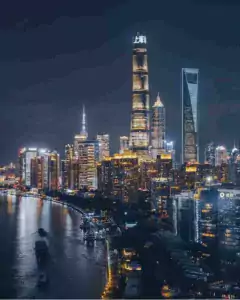
6.Masdar City, Abu Dhabi:
Sustainability: Masdar City is an ambitious project that seeks to become one of the world’s most environmentally friendly communities. It emphasizes efficient mobility, green building, and renewable energy.
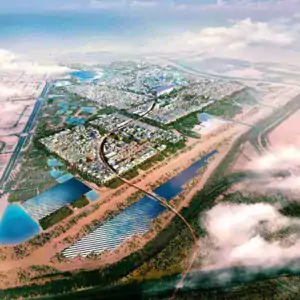
7.Songdo, South Korea:
Smart City Technologies:Songdo is a planned city that was built with smart city technologies at its core. It has cutting-edge waste management techniques, smart transportation, and green areas.
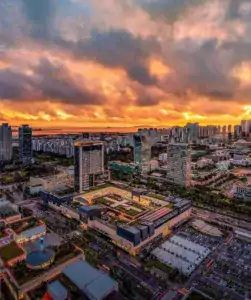
8.Toronto, Canada (Quayside Project):
Smart City Development:The Quayside Project, a Sidewalk Labs effort, aims to build a community in Toronto that makes use of technology for urban efficiency and sustainability. It focuses on sophisticated urban infrastructure and data-driven decision-making.
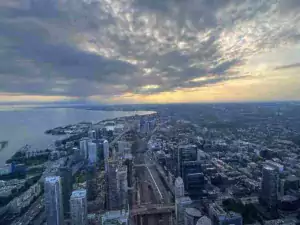
9.Barcelona, Spain:
Smart Grids: In order to distribute and use energy more effectively, Barcelona uses smart grid technology.
Transportation: To improve traffic flow and save pollution, the city has put in place intelligent transportation technologies.
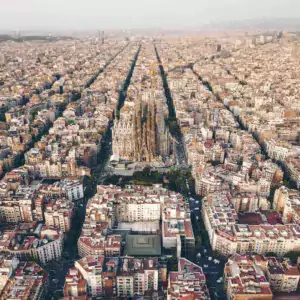
10.Copenhagen, Denmark:
Infrastructure for cycling: With extensive bike lanes and programs to promote cycling as a key method of transportation, Copenhagen is a pioneer in bicycle-friendly urban planning.
Green energy: The city places a big emphasis on wind energy and other renewable energy sources.

(These cities are leading examples of futuristic urban settings due to their distinctive approaches to technology, urban design, and sustainability.)
That’s for now about Sustainable urban Planning . Thanks for reading at our website. If you find some changes in above researched information then please don’t hesitate to reach out at: thehappeningworld44@gmail.com
If you like this article, please share it and you can also suggest us about more topics that we can cover in our upcoming articles at our website.
See you again, Thanks!!!
